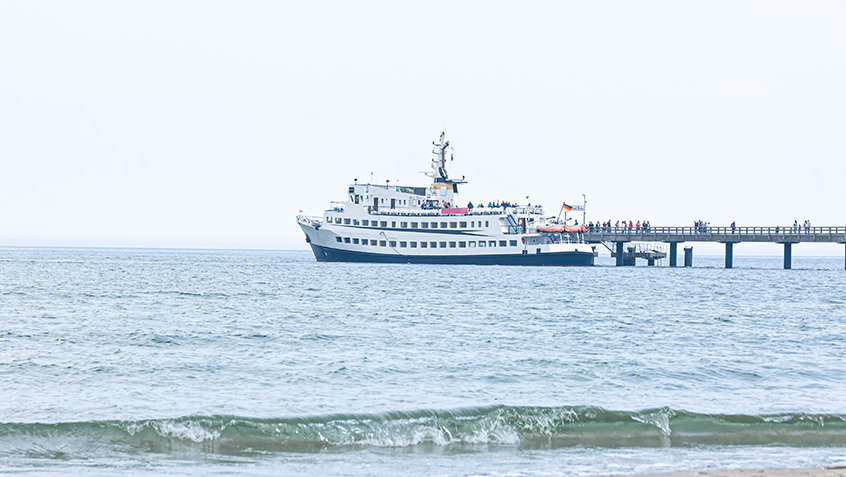- Date: 06/02/2022
- Author: Haneea Isaad
- Courtesy: The Dawn
EXTREME cold weather across the country, a domestic gas supply gap of 1,300mcf per day and skyrocketing imported LNG prices that Pakistan can ill afford — it is a nightmare for the government. The prime minister’s recent directive to gas utilities to build an LNG terminal by next winter may be rooted in the right reasons. Still, such a terminal may elude economic justification with fears of it turning into another stranded asset, resulting in increased electricity and gas tariffs for consumers.
The power sector consumes the largest proportion of LNG imports, followed by general industries and the fertiliser sector, which uses it both as feedstock and fuel. Back in 2015, when the first LNG import terminal was set up, investments in LNG infrastructure and power plants were justified with the argument of pivoting away from the use of expensive furnace oil for power production. Even up to 2019, LNG import prices ranged from $7-$10mmBtu and decreased to less than $2/mmBtu in 2020. Compared to other fuels, the low price provided temporary respite to power producers.
Unfortunately, the trend has since reversed. The last quarter of 2020 brought in an extremely cold winter in North Asia, causing the demand for natural gas to soar. Extreme LNG price volatility continued into 2021, with single shipments selling as high as $56/mmBtu in October 2021. Countries exposed to the spot market had to pay these exorbitant prices or go without fuel. Pakistan, which sources over half of its LNG from spot markets, had to face the same at $30/mmBtu and, at such unfavourable rates, often failed to procure the fuel.
Pakistan has four long-term contracts with LNG suppliers, however, higher profit margins in international spot markets incentivised suppliers to default on cargo deliveries. Without sufficient legal protection to prevent this, Pakistan was forced to look towards the spot market for emergency procurement at a higher price. For example, in October 2020, when Pakistan floated tenders for six cargoes to be used in December, the bids received were in the range of 16 per cent to 19pc of the Brent rate (the international benchmark for crude oil pricing), much higher than the 13.37pc of the Brent rate offered by the long-term LNG supply contract with Qatar. This winter, two long-term contract suppliers defaulted on term deliveries. To compensate, Pakistan had to buy LNG at the highest price ever of $30.6/mmBtu from Qatar Energy to meet its peak winter demands for December.
Why isn’t Pakistan looking towards cleaner energy?
Extreme LNG price volatility has led to another unpalatable effect in power markets. Unable to procure enough LNG from the government, the power producers have now turned to furnace oil to ensure adequate power supplies — the very situation the LNG infrastructure was built to avoid.
So why is Pakistan not looking towards other, and much cleaner, energy sources?
A floating offshore LNG terminal may cost between $400 million and $500m without factoring in operational expenses and imported fuel costs. In comparison, the upfront cost for setting up a solar park, in Pakistan, would be $600,000 per megawatt; meaning that the installation of 1,000MW of solar capacity can cost nearly the same as a single LNG terminal. Furthermore, exorbitant spot prices directly impact the cost of power production when LNG is used as a fuel. This winter, fuel costs alone for LNG power plants went as high as Rs16/KWh, while the levelised cost of electricity generation from solar and wind energy stood at just Rs6/KWh.
In its race to keep its citizens warm and the furnaces lit, as Pakistan scrambles to procure more of this expensive fuel, the PTI government must not lose sight of the pledge it has made to have a 60pc share of renewable energy in the energy mix by 2030, or of how potent methane emissions are. One of the main constituents of natural gas, methane accounts for nearly a quarter of the global temperature rise leading to climate change.
The International Energy Agency’s latest gas market report predicts that price volatility will likely continue in 2022 hurting emerging economies the most. As companies turn towards strategies that lead them on the path to reaching net-zero targets, there will be little room for gas, and LNG use will need to decline by 60pc by 2050.
Even if we set the environmental and climate cost aside and mull over the chaotic supply chain for LNG, it may be prudent not to invest in more LNG infrastructure, given the inability of the government to procure enough cargoes on the spot market. Without gas availability, what is the point of building terminals that may become white elephants? Getting money out of LNG and putting it into renewables instead may be a smarter move in a rapidly changing world that favours climate-friendly investments.
Zofeen T. Ebrahim is a Karachi-based independent journalist. Haneea Isaad is a research associate at the Institute for Energy Economics and Financial Analysis.

